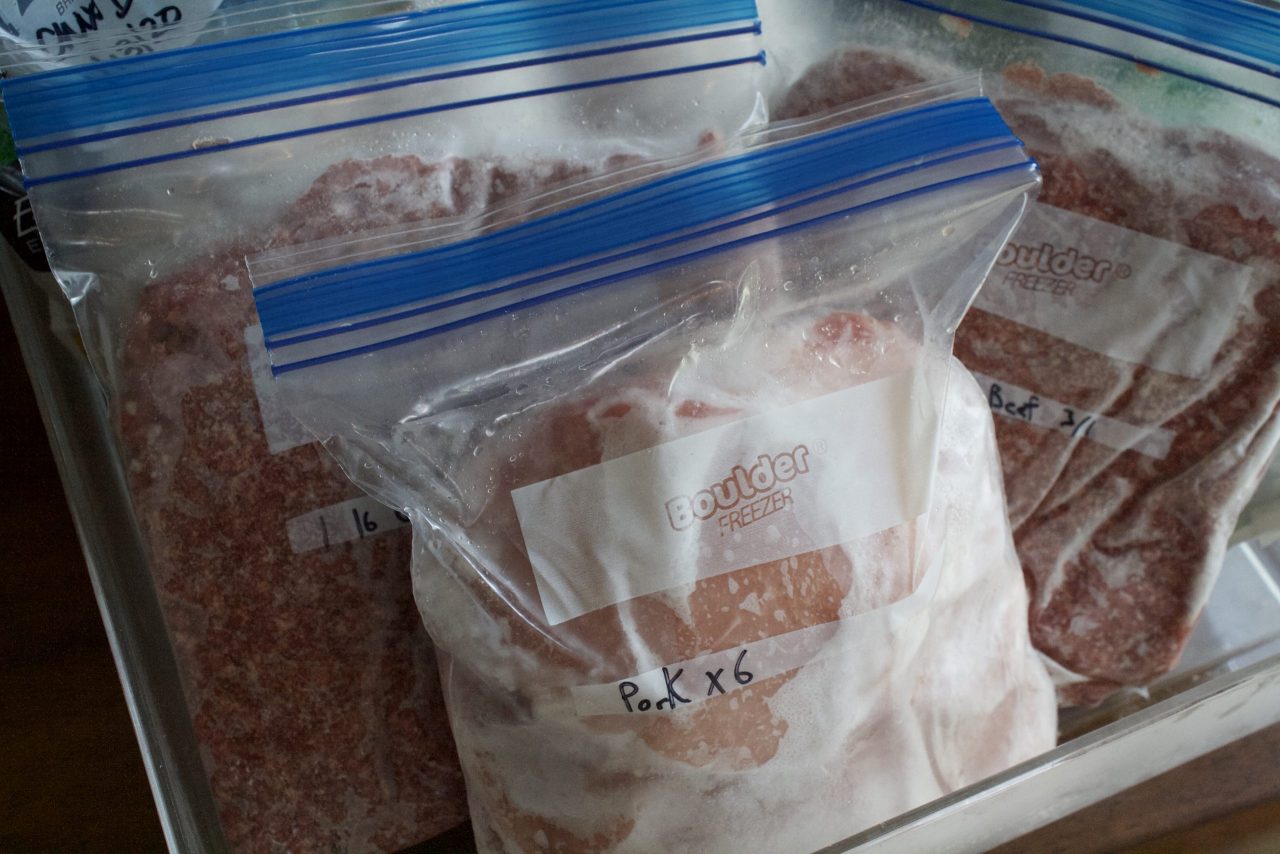
It was fun publishing our first article last week and we appreciate all of the feedback we received. I wanted to share a few personal tips I use to maximize the benefits of meal planning.
Servings
Being a family of five makes it quite rare that we find recipes with the correct quantity of ingredients for our meals. Mr. Doughmaker and I lived together for three years before our first child came along. When we would develop our monthly meal plans during those years, we learned that we had to adjust recipes frequently to limit our food waste.
Most recipes are written for a family of four to six. If you have a smaller family (or larger) just be sure to adjust the ingredients needed accordingly. This will lead to less waste in the long-run.
Substitutes
Having trouble finding ground beef and chicken breasts at the grocery store these days? Us too. While having a plan before going into the grocery store is key to reducing extra purchases, it’s ok to stray as long as you’re only replacing items already on your list.
If you can’t get your hands on chicken breast, grab turkey breast instead. No ground beef? Grab any cheap cut of beef instead. You can cube or slice it at home to use in your recipes.
If you can’t find a suitable substitute at the store, consider making it from scratch instead. Some things we’ve made from scratch recently are soup stock, spaghetti sauce, pasta and bread.
Choosing a Store
Mr. Doughmaker usually does all the grocery shopping for our household and he actually enjoys it – which is great for me! Even before the pandemic started, I avoided grocery shopping at all costs. If I did have to go, I wanted to spend as little time as possible inside a grocery store so here’s my technique.
Within 5 minutes of our house, we have 4 grocery stores. Three national chains and one local grocer. Most of you will be familiar with 3 of those stores. The local grocer’s seen better days. It has awful fluorescent lighting and tight aisles and I don’t like it.
This is EXACTLY why I shop there. I want to get in and out as fast as possible. There’s no fancy displays, no natural light or robots checking the aisles. And because of that, I’m not tempted to look for extra things to add to my cart. I don’t leave after 2 hours of shopping (that should have only taken 30 minutes) feeling delirious and dehydrated with extra stuff that wasn’t on my list.
We’ve all needed to find ways to adjust to the new reality of living through a global pandemic so here’s what we’ve found works well. We’re using grocery pickup to get what we can from one of the major grocery stores to limit time spent inside any stores. What we aren’t able to get through pickup, we’re getting from the local grocer. They seem to be well-stocked most days.
Re-packaging
For me, one of the most important steps of meal planning is re-packaging food in a way that is conducive to the recipes we’ve chosen. For instance, if we’ve picked a meal that uses two chicken breasts but we’ve purchased a five-piece tray, I re-package them into three freezer bags: two, two and one. Also, I try to package the meat in a single layer to make defrosting quicker.
What I am trying to avoid by packaging things in this way, is defrosting five chicken breasts for a meal that only requires two. I’m less likely to leave the remaining three pieces in the fridge until they’re too far gone to use. Also, try to re-package as soon as possible after bringing your groceries home to reduce the risk of the food going bad before you use it.
 You can take it one step further by labeling each package with the name of the meal you plan to use it in. This is helpful if you live in a home where you are not the one preparing every meal. You reduce the risk of someone unknowingly using ingredients for a meal that isn’t on the meal plan.
You can take it one step further by labeling each package with the name of the meal you plan to use it in. This is helpful if you live in a home where you are not the one preparing every meal. You reduce the risk of someone unknowingly using ingredients for a meal that isn’t on the meal plan.
Tracking your progress
Finally, how can you tell if you’re doing a good job? There are a few ways to track to if you’re making a positive impact to your grocery bill.
1. Is your grocery bill smaller than last month after implementing these changes? Make sure you are tracking how much you spend each month to see how much you are truly saving.
2. How empty does your fridge or pantry look at the end of the month? Taking a look at a nearly empty refrigerator gives us a sense of pride and a clean slate to work with for the next month. It means we’re not wasting what we’ve purchased.
3. Still feel like sometimes your struggling? Eating take out at the end of the month instead of finishing up the meal plan you set a few weeks earlier? It happens. What is important is to take a few minutes to reflect on what worked and didn’t before you try again.
Do you have any extra tips that help you meal plan effectively? Let us know in the comments below!

Great ideas! I use your “re-packing” tip every time we get meat, it is super helpful when preparing to make meals and also keeps the freezer organized neatly.
Another idea along those lines, that I find helpful, is keeping the fridge/freezer as organized as possible. If I know all my leftovers/meats/condiments/etc. are in a specific place then they’re less likely to be lost, go bad, and get thrown away.
Exactly! Organization is key to limiting waste in our home too!